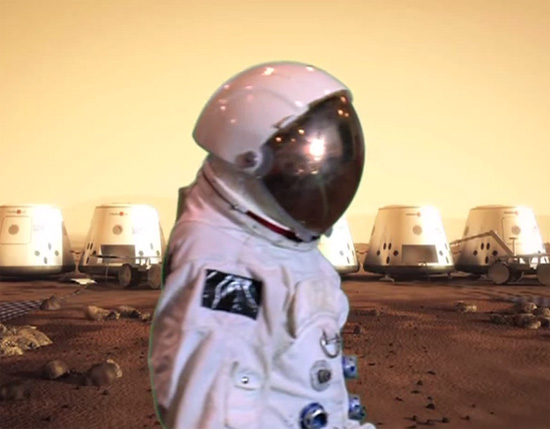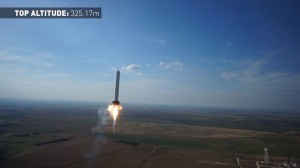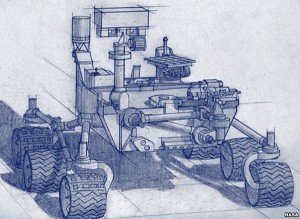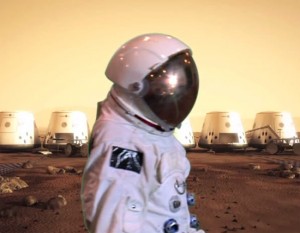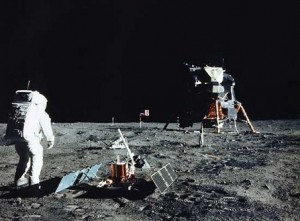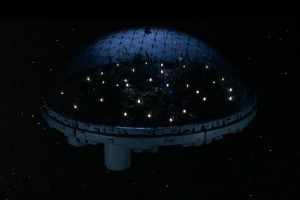This week’s headlines have one thing in common. They are all related to space.
- SpaceX Grasshopper Leaps 325 Meters This Time;
- NASA Announces Successor to Curiosity on Mars;
- Radiation – No Big Deal Says Mars One Project;
- U.S. Congress Considering National Park on the Moon;
- Robot Gardeners on Future Space Habitats.
SpaceX Continues to Successfully Test Reusable Rocket Technology
It is certainly worth watching this latest test of SpaceX’s Grasshopper. This is the 6th test flight in the program and this time Grasshopper reached more than 1,000 feet into the air before making its controlled descent to a launch pad in McGregor, Texas. Grasshopper stands 10-storeys high. It incorporates the first stage of the Falcon 9, the rocket used by SpaceX for Dragon supply flights to the International Space Station. The difference is the Grasshopper only uses one of the Merlin engines while Falcon, as its name suggests, has nine.
This latest leap follows five previous flights each progressively higher. The difference this time was the addition of a suite of on board navigation tools for precision landing, essential if Grasshopper is to be used the way SpaceX intends, as a point-to-point reusable rocket launcher. Of course what SpaceX is demonstrating has been achieved by NASA in the past with the Apollo program LEM (Lunar Excursion Module) performing a controlled descent to the Moon’s surface. But what makes SpaceX’s efforts so interesting is these controlled descents are happening in the much more demanding environment of Earth with its deeper gravity well and thick atmosphere.
NASA announces 2020 Rover to Do What the Viking Landers Did in 1976
NASA has been skirting the issue of whether there is or was life on Mars for far too long. In 1976 it sent two Viking landers to the Martian surface and the on board Label Release experiment provided readings which some scientists state showed evidence of life on the Red Planet while others denied it. Since then NASA has sent a variety of landers and rovers to look for “evidence of an environment conducive to life” – in other words signs of free flowing water. Spirit, Opportunity, Curiosity and Phoenix have all provided the sought for evidence. At some point in the past Mars was warmer and wetter than it is today, and at some point in the past atmospheric oxygen existed on the planet.
Well it appears that NASA is finally going back to doing the type of testing that was aboard the Viking landers and do it with a rover based on much of the current design of Curiosity. By incorporating the previous design platform NASA will save a considerable amount of money in preparing the rover. When it gets to Mars the as yet to be named rover will sport astrobiology testing in an on board science laboratory, and advanced sampling technology capable of core drilling and caching of samples for later return to Earth. The 2020 mission will follow two planned European-led missions to Mars which include an orbiter and rover planned for 2016 and 2018. It took ten years for Curiosity to be realized so NASA has its work cut out for it to complete this next project in time for the 2020 launch.
Much Hyped Mars One Initiative Says Radiation Exposure Shouldn’t Be A Problem
When Curiosity flew to Mars it provided a detailed record of cosmic radiation exposure raising many questions about how safe a human flight to the planet would be. The report produced by NASA showed that the spacecraft received doses that would be potentially lethal to a human crew.
But the Mars One project is taking this report in stride. It intends to establish a permanent human settlement on the Red Planet in 2023. Why isn’t it worried about cosmic radiation? Because its Martian colonists will only be on a one-way trip. There is no return mission. Also the Mars One spacecraft will have better shielding than Curiosity providing 10 to 15 grams per square centimeter (2.3 to 3.4 ounces per square inch), equal to a 10 to 15 centimeter (4 to 6 inch) layer of water surrounding the crew quarters. In addition, in the event of a coronal mass ejection from the Sun the spacecraft will include an internal chamber providing two times greater protection. That translates to about half of the radiation exposure experienced by Curiosity.
On the surface of Mars, the Mars One colonists will live in shielded habitats covered by up to 5 meters (16 feet) of Martian soil which would provide the same level of protection we experience here on Earth. And colonists who go outside the habitats will experience radiation exposure equivalent to high altitude mountain climbers here on Earth. They should be safe if excursions are limited to no more than a couple of hours per day.
U.S. Congress to Consider Establishing Apollo Lunar Landing Sites National Historic Parks on the Moon
There isn’t enough for Congress to do right now for those of us here on Earth so it has looked upward to space to enact legislation to create national parks on the Moon. Two Democrat congressional representatives, Donna Edwards and Eddie Bernice Johnson have introduced Bill HR 2617 that if passed will establish national historic park sites on the Moon to commemorate each of the Apollo landings, protecting the sites from future missions by private enterprise to exploit lunar resources.
In 2011 NASA published a series of recommendations to protect and preserve historic U.S. lunar artifacts. Their recommendations included not just human landing sites but also those of Surveyor, Apollo‘s robotic predecessor, and impact sites from early lunar probes like Ranger. Among the challenges in establishing the size of national parks on the Moon is the amount of area involved. For example Apollo 11‘s entire landing site (seen below) can easily be contained in a small historic park. But Apollo 17, with its three-day mission that involved extensive travel by the two-astronaut team, would require a much larger area of the lunar surface being set aside for preservation. Every footprint and every piece of equipment would be historically preserved.
The bill calls for making the Apollo 11 landing site a United Nations World Heritage site. If it passes that National Park System in the U.S. will be required within a year to establish Apollo parks on the Moon. Now if we can only sit down and try and solve these pesky problems down here on Earth.
The Future of Agriculture in Space Will Include Robots
University of Colorado students at Boulder are demonstrating the use of robots in space agriculture as part of a project looking at plant production technology for Deep Space habitats. With NASA as sponsor they have developed the Robotic Gardening System. The technology rotates plants under LEDs to simulate the daily movement of the Sun. A robotic arm continuously tends to the plants while sensors and probes check nutrients, soil conditions and moisture levels. The robotic arm is capable of cutting vegetation and harvesting fruit.
All of this reminds me of Silent Running, a 1972 film about an astronaut who along with his robot companions is asked to destroy the last reserve of Earth forests on board a space habitat. Like the forest on the Valley Forge, the spacecraft in the movie depicted below, NASA’s ultimate goal is to create a self-sustaining closed ecosystem in space providing human crews with both food and a bit of nature to accompany them in the otherwise sterile technology-laden world in which they would live and work.
A Postscript
A question for those of you who read this blog faithfully. I am considering writing several books based on the material that appears here at 21st Century Tech blog. What I’m asking you to provide is feedback on subject areas which would be of greatest interest to you should I proceed. For example I have posted 165 blogs concerning energy, 176 on the environment, 114 on medical science and 104 including today’s posting on space. Which of these is of greatest to you my readers? I would love to hear from you.
Once again, thanks for dropping by and for your many questions and comments both here on the blog site as well as the lively discussions appearing on LinkedIn and the World Future Society.
— Len Rosen

